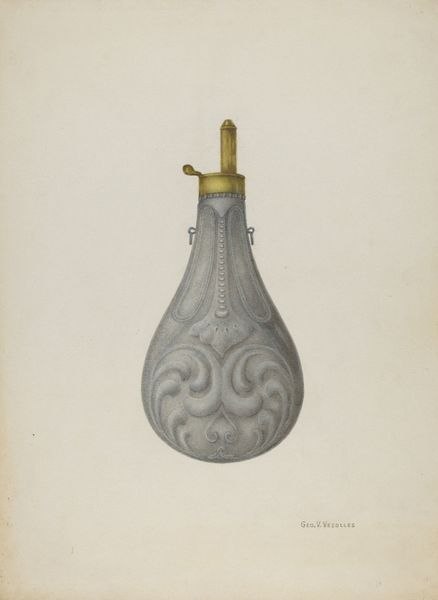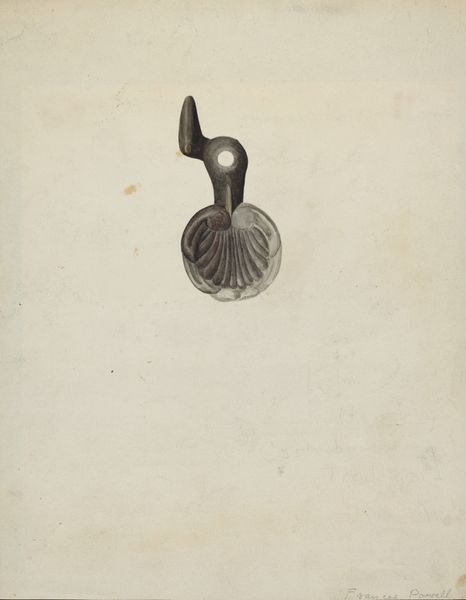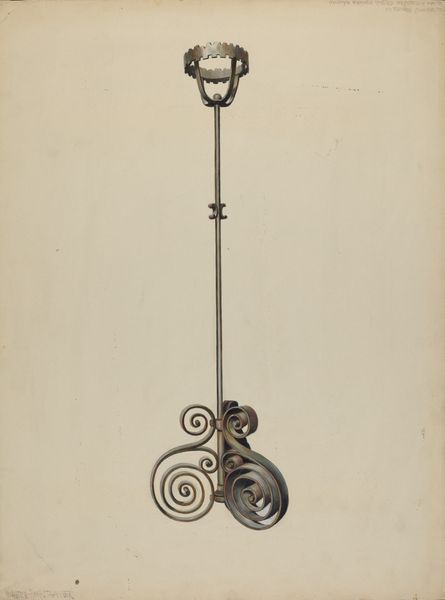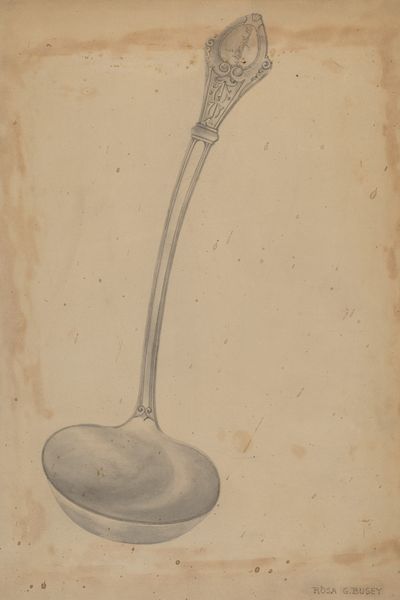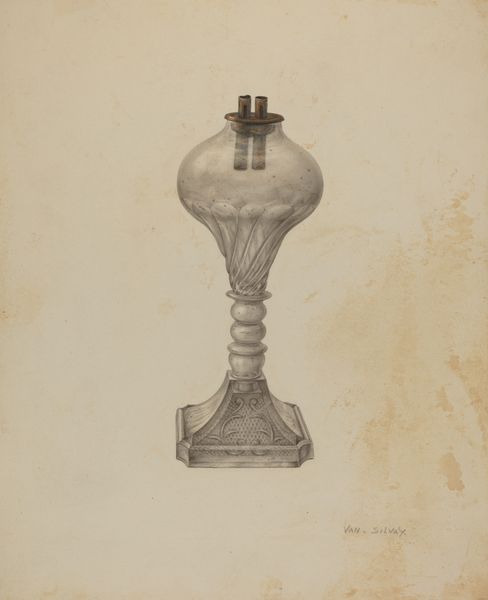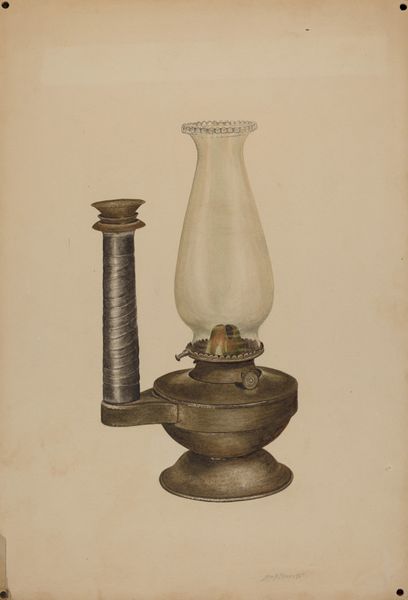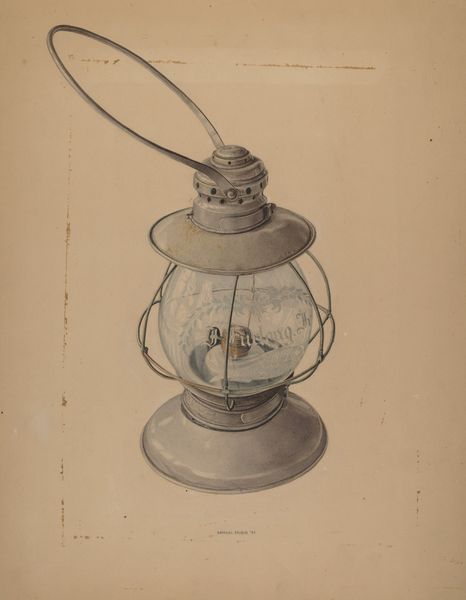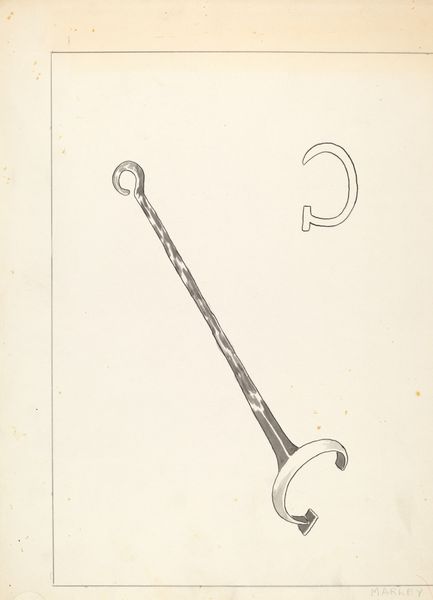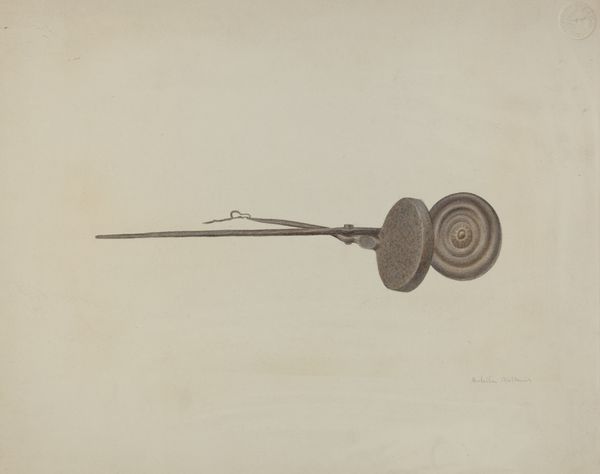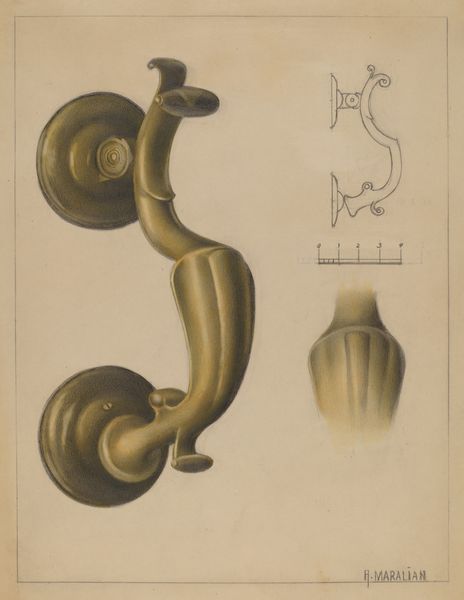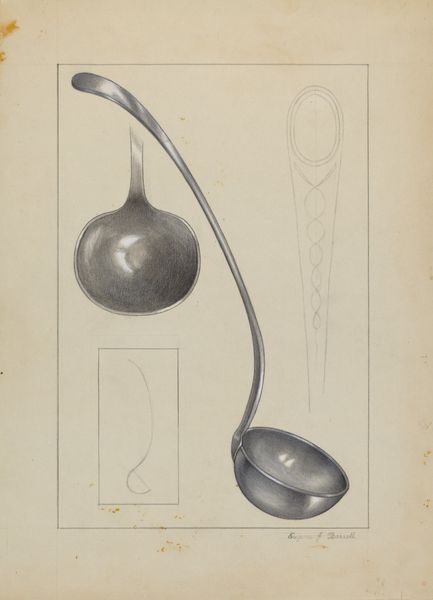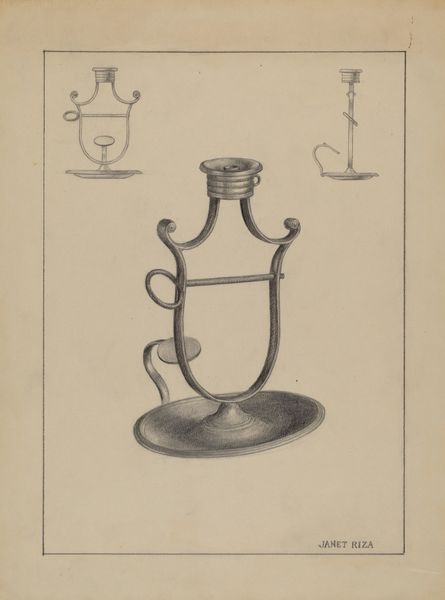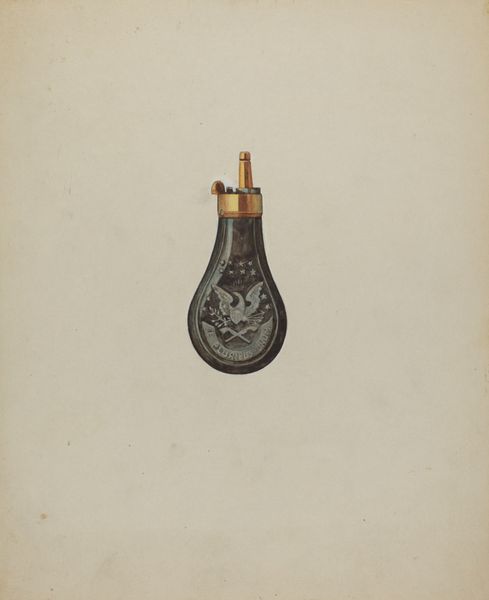
drawing
#
pencil drawn
#
drawing
#
toned paper
#
light pencil work
#
pencil sketch
#
personal sketchbook
#
pencil drawing
#
sketchbook drawing
#
pencil work
#
watercolour illustration
#
watercolor
Dimensions: overall: 29.1 x 22.9 cm (11 7/16 x 9 in.) Original IAD Object: 3 3/4" in diameter
Copyright: National Gallery of Art: CC0 1.0
Editor: Here we have Jacob Lipkin's "Combination Wall and Standing Lamp," dating from around 1938. It’s a drawing, mostly pencil, on what looks like toned paper. The overall feeling is very preliminary, like a quick study. What do you see in this piece? Curator: Well, the most immediate thing that strikes me is the curious duality embodied in the object itself—a combination of wall and standing lamp. It speaks to a kind of transitional moment in design, a reaching for flexibility. Think of the pre-war era, with its economic anxieties and the rise of functionalism. This hybrid lamp becomes a symbol of adaptation, doesn't it? Editor: Adaptation... That makes sense. I was also wondering about the almost surreal quality of it. Is there anything you can tell me about why this era might be reflected in such design? Curator: Absolutely! Consider the visual language – the soft pencil work, almost dreamlike. This isn’t a blueprint, it's an idea sketched onto the page. Notice how light, a primal symbol of knowledge and divinity, is here contained and domesticated into the bulb, becoming a sort of subservient commodity in the domestic space. Do you get a sense of the industrial age creeping into personal space? Editor: Yes, definitely. It’s fascinating to consider how everyday objects can be loaded with all this symbolic meaning. Curator: Indeed! Lipkin’s drawing provides a glimpse into how cultural shifts become embedded in our material culture, a visual encoding of anxieties and aspirations we often take for granted. Editor: I’ve definitely learned a lot about looking deeper at how we consider design now!
Comments
No comments
Be the first to comment and join the conversation on the ultimate creative platform.
